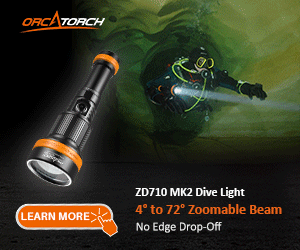I'm not sure the evidence supports your assumption.
Hi Tursiops,
I think there is truth on both sides of this sub-discussion.
In a diving scenario there are two broad causative factors for a cardiac arrest.
1. A primary cardiac event (what most people would refer to as a heart attack) typically caused by blockage of one of the coronary arteries. Such an event could obviously occur anywhere in a predisposed individual, but given the aging diving population and the stress / exercise sometimes associated with diving it is perhaps not surprising that they can occur on dive trips.
2. A secondary event where the heart stops pumping due to some other issue, with the most likely in diving being hypoxia in a drowning or out of air scenario (which is what SapphireMind is referring to).
It is also entirely possible you could be dealing with both if, for example, a primary cardiac event occurs underwater causing the victim to become unconscious and drown.
This is a generalisation, but a primary cardiac event more likely to produce a shockable arrhythmia than a secondary event. Primary events are therefore more likely to be treatable using an AED. In contrast, the "way out" of a secondary event (at least initially) typically involves correcting the problem that has caused the heart to stop pumping (such as correction of hypoxia). This is SapphireMind's correct point.
What can we take out of this as divers? There are a couple of points I would make.
1. Primary cardiac events do occur on dive boats / during diving. Indeed, a high quality DAN study suggested that the disabling injury in approximately 30% of diving fatalities was a primary cardiac event [1]. Leaving aside the debate about cost vs benefit, this is probably reason enough on its own to see AEDs on dive boats as a good idea.
2. Secondary events are inevitable in drowning / hypoxia scenarios in the absence of appropriate intervention. That is why it is important for all of us to be trained in proper CPR (not just compression-only) and (if possible) to give rescue breaths in-water after retrieval of an unresponsive diver from depth if removal onto surface support is not an immediate option [2]. If a hypoxic diver has stopped breathing but has not yet gone into cardiac arrest then you will probably save their life by restoring oxygenation.
3. Just to avoid confusion, as divers we don't need to be worried about whether we are dealing with a primary or secondary event so long as we apply the basic principles of good life support. Where a diver is unresponsive and not breathing, then we simply apply a high quality CPR sequence as soon as possible, and if an AED is available put the pads on and let the machine decide whether it wants to shock the victim. If you do these things, then you will be doing the right thing no matter whether it is a primary or secondary event.
Simon M
1. Denoble PJ, Caruso JL, Dear G de L, Pieper CF, Vann RD. Common causes of open-circuit recreational diving fatalities. Undersea Hyperb Med. 2008;35:393-406.
2. Mitchell SJ, Bennett MH, Bird N, Doolette DJ, Hobbs GW, Kay E, Moon RE, Neumann TS, Vann RD, Walker R, Wyatt HA. Recommendations for rescue of a submerged unconscious compressed gas diver. Undersea Hyperb Med 2012;39:1099-1108



